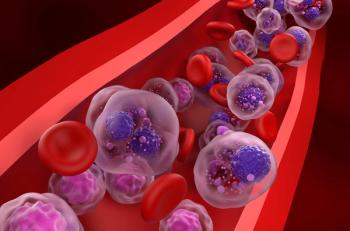
Pharmacy Practice in Focus: Oncology
- April 2020
- Volume 2
- Issue 2
Brown Bag Consult®: Case Studies in Medication Reconciliation for Patients Newly Diagnosed With Breast Cancer
Cases studies focused on medication reconcilliation for patients with breast cancer.
Editor’s note: Cases are not based on actual specific patients.
RELATED ARTICLE
- Brown Bag Consult®: Medication Reconciliation for Patients With Breast Cancer
CASE 1
KP, 61 years old, is a loyal customer at her community pharmacy where you work. She has also become a new patient at the local oncology clinic after being recently diagnosed with metastatic, hormone receptor—positive, human epidermal growth factor receptor 2 (HER2)-nega-tive breast cancer. KP is facing many ups and downs with her various treatment options. To the pharmacy, KP brings with her a brand-new list of medications and her current laboratory data.
KP explains to you, the pharmacist, that she just left the clinic and that these are her most up-to-date documents. You peruse the papers and notice that a medication reconciliation was performed by another pharmacist. After reviewing it against KP’s profile at your pharmacy, you notice changes and see the concern and confusion in KP’s face.
You explain the concept of pharmacy brown bag and medication therapy management sessions to determine whether she would be interested in participating. With relief, KP tells you she is, and that she will bring in all of her oral medications the following day to go over her entire history and current medication list. KP has been feeling confused and depressed due to her diagnosis, and anxious about anticipated adverse effects (AEs) that oncology medications can cause. In addition, she is very concerned that her metastatic diagnosis will cause her financial distress. She is so fatigued that she can no longer work and does not have a large support system at home to help with daily living.
The information KP has read about metastatic breast cancer online has been frightening and stressful. In response, you suggest that KP visit during a slower time in your pharmacy to allow you to provide her with the best service and care. The next day, KP is waiting in your consultation area. Having done your homework, you have filled KP’s prescriptions, reviewed discontinued medications, and opened her medication profile, and you have access to her laboratory data and medication reconciliation. You examine what is in KP’s brown bag:
- aspirin 81 mg enteric-coated (EC) daily
- atorvastatin 40 mg daily
- OTC omeprazole 20 mg daily •ondansetron 4 mg as needed
- lorazepam 0.5 mg as needed
- OTC acetaminophen 500 mg as needed
- OTC loperamide as needed
- fluoxetine 20 mg daily
- letrozole 2.5 mg daily
You compare those medications with the ones in your updated pharmacy profile:
- atorvastatin 20 mg daily•niaspan 500 mg daily at bedtime
- aspirin 81 mg EC daily
- atenolol 25 mg daily•ibuprofen 600 mg twice daily as needed•letrozole 2.5 mg daily
- palbociclib 125 mg daily for 21 days(received from a specialty pharmacy)
CASE 2
JW, a 53-year-old woman who frequents your health care system, has been diagnosed with triple-negative breast cancer, which has been a huge emotional burden. She continuously struggles to understand her treatment options and to worry about possible genetic testing, in addition to having concerns over how her diagnosis may affect her quality of life. JW originally presented to the pharmacy where you work explaining that she found a palpable lump under her arm while doing a self-screen. Your colleague told her to follow-up with her primary care physician and get a mammogram.
JW had no family history of any cancer and had never received a mammogram. The mammogram revealed a larger mass and a computed tomography (CT) scan of the chest/abdomen/pelvis showed a large primary mass in the left breast, multiple enlarged lymph nodes, and several hepatic lesions consistent with metastases. Breast and liver biopsies showed poorly differentiated, mammary adenocarcinoma that was triple-negative breast cancer (TNBC) with Ki67 staining 70%.
JW began first-line chemotherapy with doxorubicin. Approximately 6 months later, JW returned with increasing fatigue and back pain. Her CT scan showed progression of the hepatic lesions and her bone scan showed new lesions in the T4 and T5 vertebra. At the time of progression, her Eastern Cooperative Oncology Group performance status was 1. JW began therapy with docetaxel plus capecitabine as part of a clinical trial at an academic center 30 miles away.
Today, JW returns for a 4-week follow-up feeling short of breath and complaining of worsening back pain, to the extent that she cannot stand up straight or walk well. Her CT scan shows the bone lesions worsening, as well as several new bilateral pulmonary lesions. According to lab values, JW has normal liver and renal function. Therapy is initiated with eribulin at a dose of 1.4 mg/m2. JW is transferred to a more local oncology care setting because the 30-mile commute to the academic center was too stressful and burdensome.
JW wonders why she is not getting the same breast cancer treatments that the women in her community support group receive. Why does she need medications that are infused, whereas others get oral treatments? Why do others seem to live normal lives while she struggles to perform basic functions? JW can no longer consistently work; she is sad and possibly clinically depressed. She feels anxious all the time about her future and has a hard time being positive.
Articles in this issue
over 5 years ago
The Role of PARP Inhibitors in Treating Ovarian Cancerover 5 years ago
Considerations in the Treatment of Acute Myeloid Leukemiaover 5 years ago
Telehealth Can Help Reach Rural Patients With Cancerover 5 years ago
CE: A Pharmacist’s Guide to Effective Management of Hyperkalemiaover 5 years ago
Expert Panel Examines Biosimilar Pathwayover 5 years ago
How Do Pharmacies Evaluate Cleanroom Automation Systems?Newsletter
Stay informed on drug updates, treatment guidelines, and pharmacy practice trends—subscribe to Pharmacy Times for weekly clinical insights.








































































































































































































